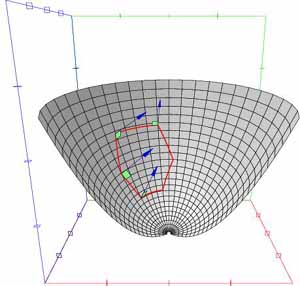
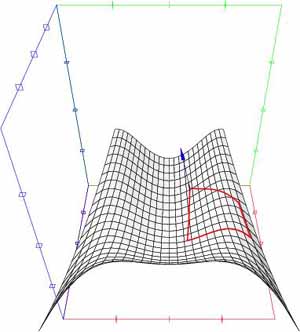
It can be represented by a spherical image by parallel normals ( I ) and the angle produced by parallel transport around the selected region( II ).
 |
 |
Gaussian curvature K at point P = Limit( region->P) of Area(map)/Area(on the surface)
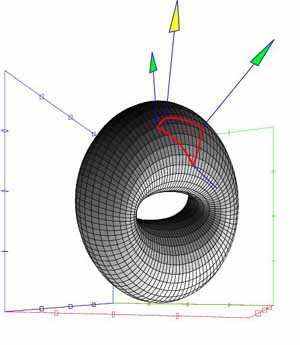
b. Properties
Gaussian curvature doesn't change if a surface is bent ( folding without tearing or stretching ) but it's sign will change if the surface is turned inside out. If the order of the corresponding points on the spherical image changes K is negative.
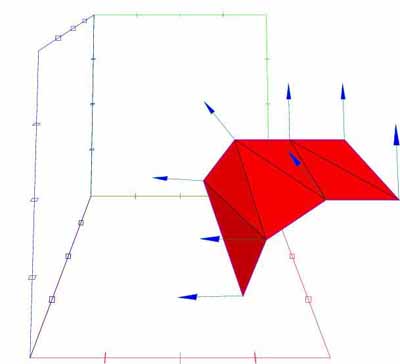 |
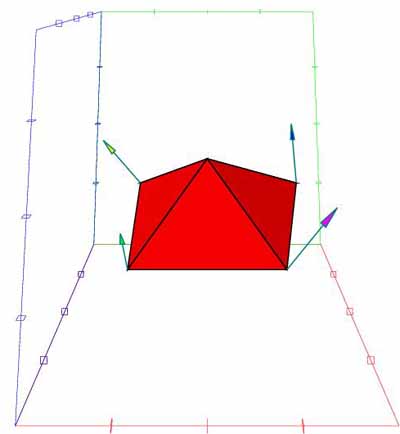 |
| Bending | Orientation |
Given a closed path consisting of straight lines on some surface we can transport a vector V around it's perimeter in a counter-clockwise direction. The condition is to keep the angle between V and the tangent to the path constant. On a surface with non zero K the vector will end up pointing in a different direction from where it started.
 |
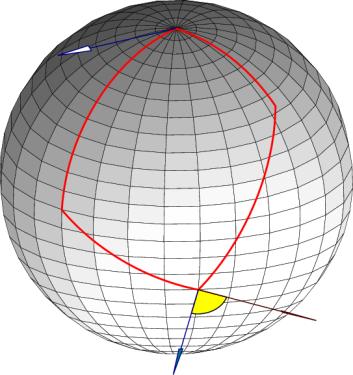 |
|
| On a flat surface | On a sphere |
a. Area of the gauss map
We can find the are of the triangle on the sphere produced by the Gauss map.
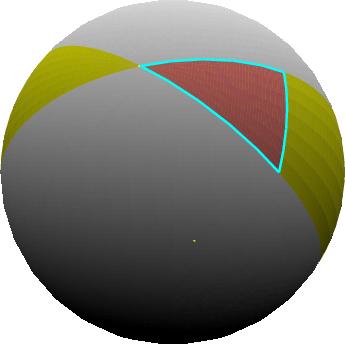 |
b. Holonomy angle
All we need to know to find H are the angles on the surface of the sphere ( they can be A , B , C) .
We can also name the exterior angles of the triangle as A' , B' , C' .
According to Gauss-Bonnet formula H = (A + B + C - Pi ) or ( 2Pi - A' - B' - C' ).Two are equivalent since X' = Pi - X.
A way to show that is to look at the angles traversed by the tangent vector to end up where it started compared to the
ones traversed by the transport vector( clockwise angles are negative and counter-clockwise positive ).
The difference is the negative of H.
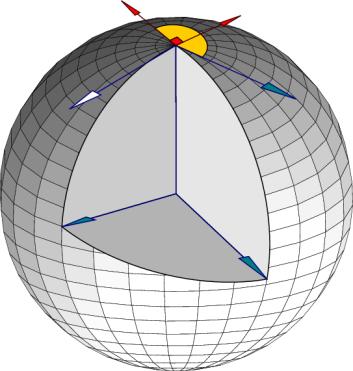 |
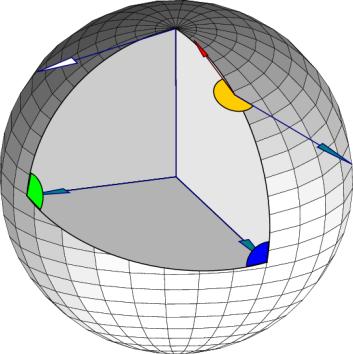 |
Holonomy angle and the mapped area are equal which again proves that Gaussian curvature can be written fully in terms of local surface properties.
Important note (which I would have illustrated if I had more time) is that both values are equivalent to what is called angular defect, which represents the difference between sum of angles of a planar triangle (Pi)
and the sum of angles of the surface triangle (A + B + C ).
 |
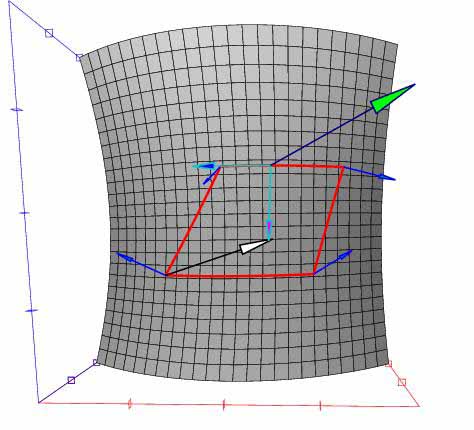 |
| Positive curvature | Negative curvature |